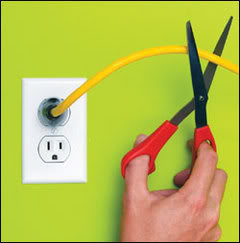Research: Cord-cutting is for the young
June 30, 2011
 Just three per cent of pay-to-view customers report have ‘cut the cord’ and cancelled their television service in favour of other viewing options, according to the 2011 US Residential Pay-to-View Study from influential marketing information services company J.D. Power and Associates.
Just three per cent of pay-to-view customers report have ‘cut the cord’ and cancelled their television service in favour of other viewing options, according to the 2011 US Residential Pay-to-View Study from influential marketing information services company J.D. Power and Associates.
The inaugural study provides insights concerning attitudes, viewing preferences, behaviour patterns, awareness and experiences of pay-to-view customers among the major home television and video service providers across the United States.
While a minority of customers overall have cancelled their cable television service, rates of cord-cutting vary significantly by generation. Six per cent of Generation Y customers (ages 17-34) say they no longer subscribe to a residential television service, compared with only two per cent of Baby Boomers (ages 47-65). One per cent of customers ages 66 to 86 report cancelling cable service, while four per cent of Generation X customers (ages 35-46) say the same.
“The predictions of the demise of television subscription service as we know it are clearly premature,” said Frank Perazzini, director of telecommunications at J.D. Power and Associates. “The popularity of services such as Netflix and Redbox is a clear indication that consumers are enjoying the availability of alternative viewing options. However, with 52 per cent of television customers reporting that they still watch regularly scheduled programming as it is broadcast, the current model will remain viable for the next two to three years, at a minimum.”
The study measures customer satisfaction with the pay-to-view service experience across six factors: variety of videos provided; ease of use; cost of service; customer service experience; billing; and offerings and promotions. Across the industry, overall satisfaction with the pay-to-view video service providers averages 743 on a 1,000-point scale. Netflix and Redbox perform particularly well in satisfying pay-to-view customers.
The study also finds that more than a quarter (27 per cent) of video service customers indicate that they watch videos on a handheld mobile device, such as a music player, mobile phone or tablet. Mobile phones are still the most commonly utilised handheld mobile device for watching videos (15 per cent), although with the surge in TV applications being developed for tablets, the use of these devices (currently 12 per cent) could increase notably. Music players also currently hold a 12 per cent share. Video service satisfaction is above average when customers utilise these mobile devices and music players to access content.
The Study is based on responses from 6,815 U.S. households that evaluated pay-to-view providers, including Amazon, Apple TV, Blockbuster/Blockbuster Express, Google TV, Hulu/Hulu Plus, local video stores, Netflix and Redbox. The study was fielded in April 2011.
